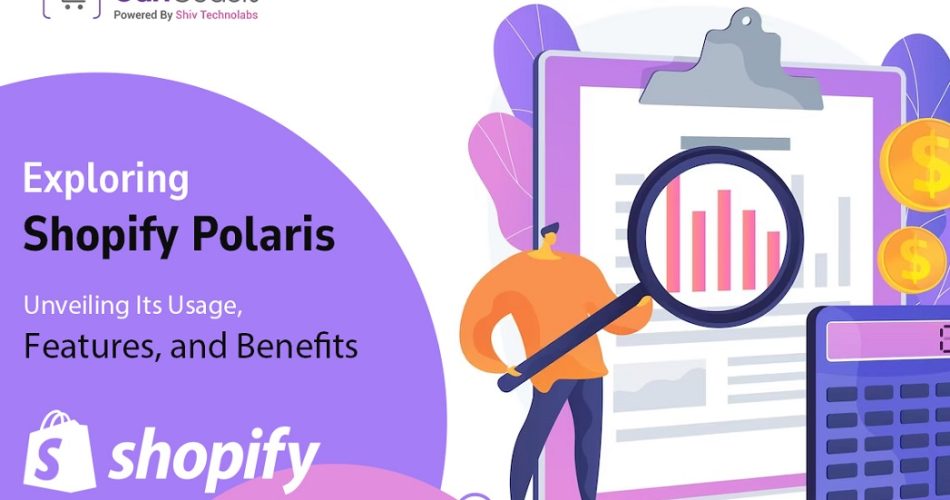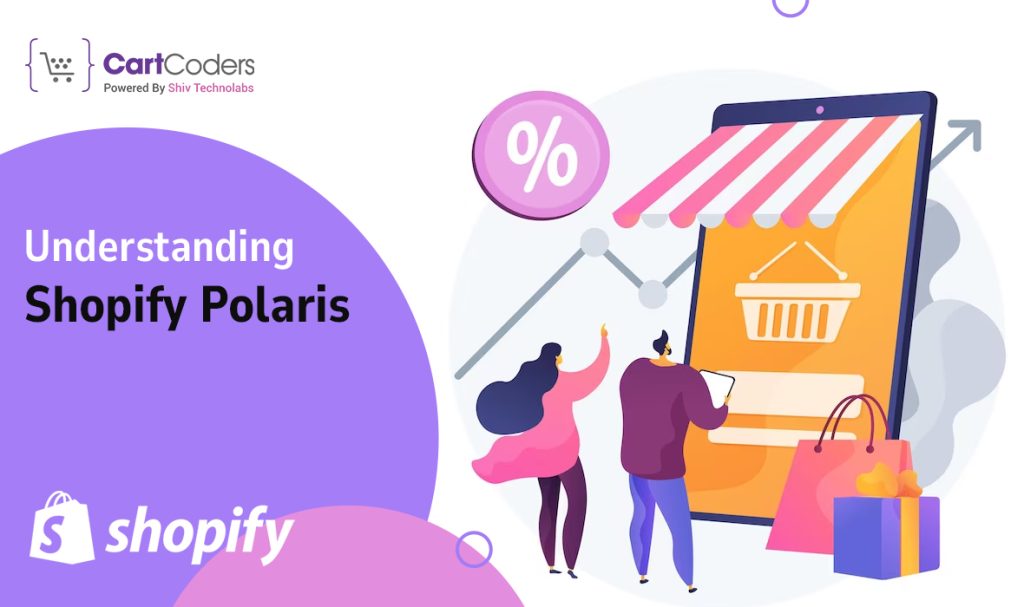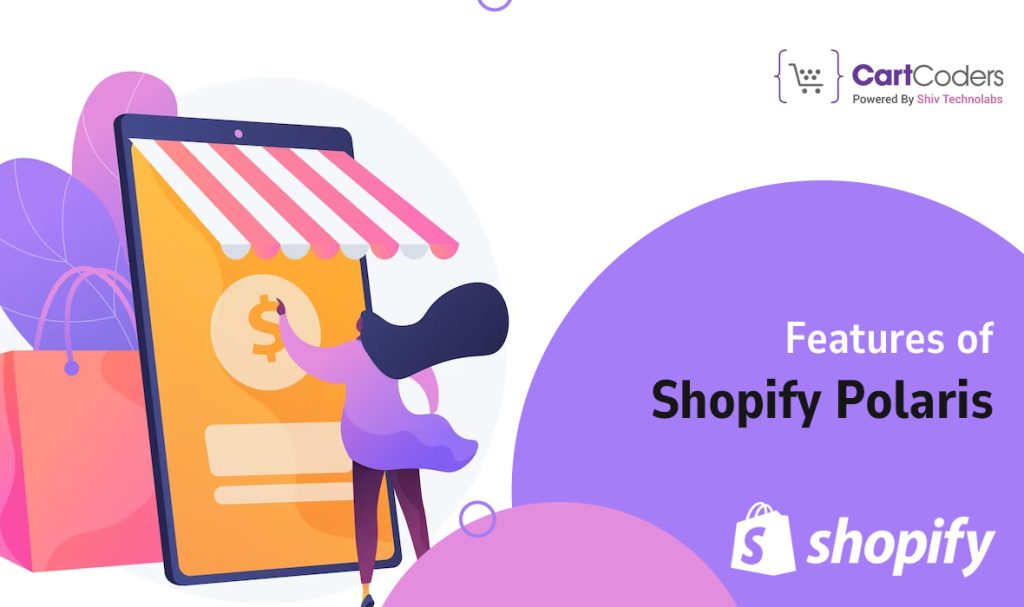Custom Engagement Solutions
Unlock tailored solutions with a free, no-obligation strategy session.
Expert Developers & Engineers on Demand
Scale Your Team with Skilled IT Professionals
Expert Guidance for Digital Transformation

Introduction
In the ever-evolving world of e-commerce, user experience (UX) stands as a cornerstone for success. As online merchants compete to attract and retain customers, a seamless, intuitive, and visually appealing interface has become non-negotiable.
This is where Shopify Polaris steps onto the stage. In this blog, we will delve into the depths of this trending topic – Shopify Polaris, uncovering its usage, features, and the plethora of benefits it offers to both developers and merchants.

Before we dive into the specifics, let’s understand what Shopify Polaris is all about. In simple terms, Shopify Polaris is a design system created by Shopify to ensure a consistent and user-friendly experience across all their products and services.
This design system encompasses various guidelines, UI components, and best practices that help Shopify developers and designers create apps that align with Shopify’s brand identity and enhance the user experience.
The roots of Shopify Polaris can be traced back to the realization that a unified design language can significantly impact user interactions. With Polaris, Shopify aimed to provide a consistent, intuitive, and accessible design framework.
It streamlined the user journey across various touchpoints, whether it’s a merchant dashboard, a checkout process, or any other interaction within the Shopify ecosystem.
At its core, Shopify Polaris serves three primary purposes:
Consistency is key when it comes to building a recognizable and trustworthy brand. By adopting Polaris, developers and designers can ensure that their apps adhere to a unified design language that aligns with Shopify’s overall brand identity.
This not only reinforces the brand but also helps merchants feel more comfortable and confident using different Shopify apps.
Shopify Polaris places a strong emphasis on user experience by offering intuitive navigation, familiar UI patterns, and thoughtful design principles. With Polaris, merchants can seamlessly navigate through different apps without the need to relearn each app’s unique interface.
Also Read:- 10 Best Shopify Themes for Beauty/Cosmetics Products
This familiarity reduces the learning curve for new users and contributes to a more positive overall experience.
Building UI components and designing interfaces from scratch can be time-consuming. Polaris provides a library of pre-built UI components and design guidelines that developers can readily integrate into their apps.
This allows them to focus more on the functionality of their apps rather than spending extensive time on designing every element.

Shopify Polaris is built upon a set of design principles that shape the entire system:
When it comes to user interface, Shopify Polaris is all about providing a diverse set of components that can effortlessly blend into your apps:
The adoption of Shopify Polaris brings forth a range of benefits:
With Polaris, developers can build apps that are visually aligned with Shopify’s brand, promoting a unified and trustworthy presence. This consistency is particularly valuable when merchants use multiple Shopify apps.
Also Read:- Shopify Expert Cost for Multi Vendor Marketplace
Polaris’s focus on intuitive navigation and familiar UI patterns enhances the overall user experience. Merchants can seamlessly transition between different apps without feeling disoriented, which ultimately leads to higher user satisfaction.
By utilizing pre-built UI components and design guidelines, developers can significantly reduce the time and effort spent on designing interfaces. This allows them to allocate more time to perfecting the functionality of their apps.
Shopify Polaris’s commitment to accessibility ensures that apps are usable by a wider range of users, including those with disabilities. This not only aligns with ethical considerations but also opens up your app to a larger audience.
To grasp the impact of Shopify Polaris, let’s consider a real-world scenario. Imagine a merchant who uses multiple Shopify apps for different aspects of their online store: inventory management, marketing, and customer support.
Each app adhering to the Polaris design system ensures a consistent user interface across all these apps. The merchant can navigate and utilize each app seamlessly, without the need to adapt to different design languages.
Before-and-after comparisons can vividly showcase the transformation that occurs when an app adopts Shopify Polaris. A “before” scenario might depict an app with inconsistent UI elements, varying color schemes, and unclear navigation.
In contrast, the “after” scenario would present the same app redesigned with Polaris, featuring standardized UI components, a harmonized color palette, and intuitive navigation. This visual comparison underscores the impact of Polaris on enhancing both aesthetics and usability.
For those interested in integrating Shopify Polaris into their apps, the journey starts with accessing resources:
Incorporating Polaris into Your Shopify Apps involves a few key steps:
As with any technology, the future of Shopify Polaris holds the potential for growth and evolution. Shopify is likely to refine and expand the system based on user feedback, emerging design trends, and the evolving landscape of e-commerce.
Developers and designers who engage with Shopify Polaris can anticipate updates that further enhance the system’s capabilities and address emerging challenges.
Shopify Polaris is more than just a design system; it’s a testament to the importance of user experience in the world of e-commerce. By providing a consistent design language, enhancing user experience, and streamlining development efforts, Polaris empowers developers to create apps that resonate with merchants and stand out in a competitive market.
As e-commerce continues to evolve, embracing design systems like Shopify Polaris will remain a critical strategy for success. Whether you’re a developer looking to create a remarkable app or a merchant seeking a seamless experience, Shopify Polaris holds the key to unlocking exceptional e-commerce interactions.
To unleash the power of Shopify Polaris, partner with a Shopify Polaris expert like CartCoders who can implement this powerful tool to enhance your online entity
Projects delivered in 15+ industries.
95% retention rate, building lasting partnerships.
Serving clients across 25+ countries.
60+ pros | 10+ years of experience.